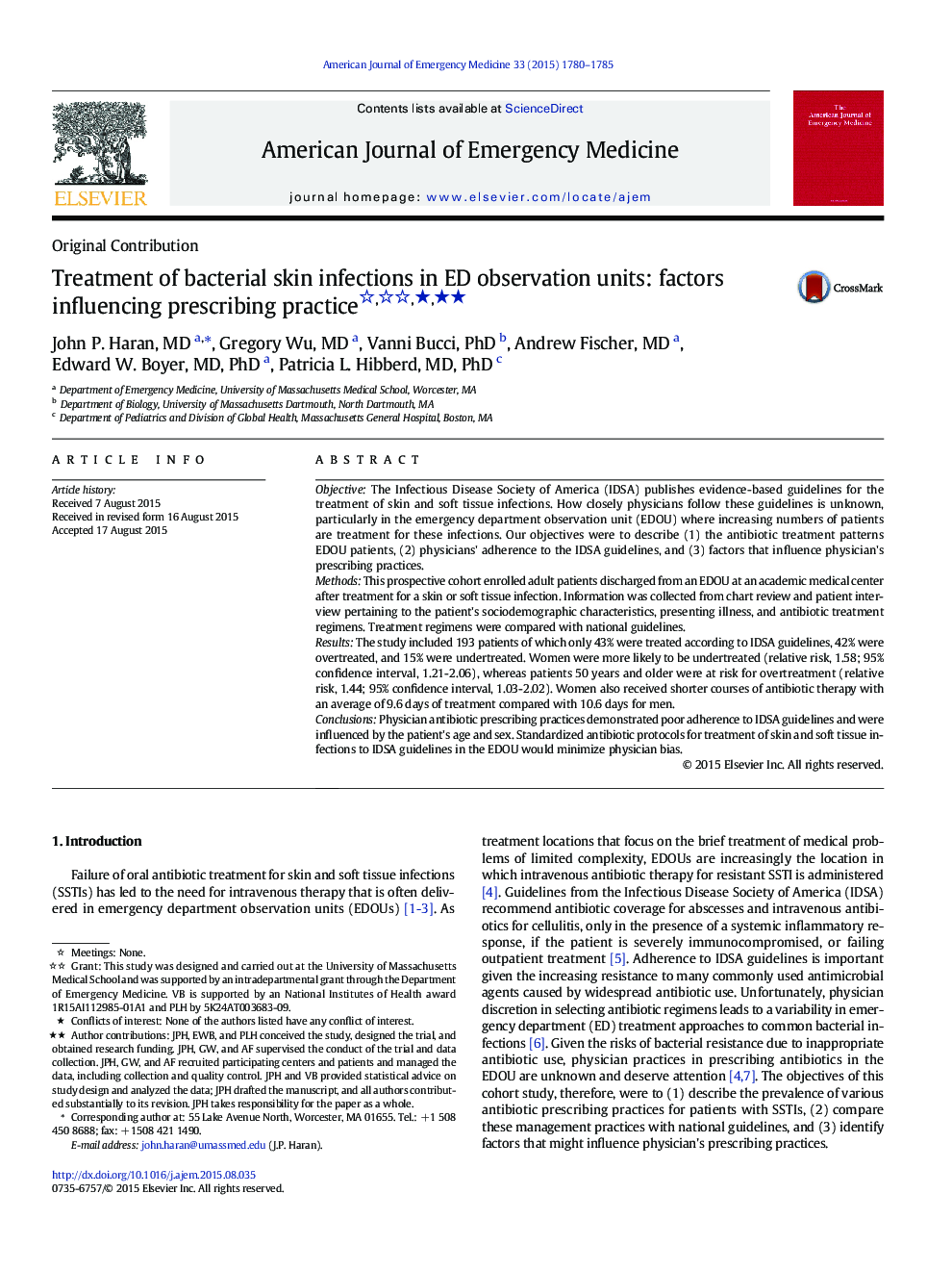| Article ID | Journal | Published Year | Pages | File Type |
|---|---|---|---|---|
| 3223529 | The American Journal of Emergency Medicine | 2015 | 6 Pages |
ObjectiveThe Infectious Disease Society of America (IDSA) publishes evidence-based guidelines for the treatment of skin and soft tissue infections. How closely physicians follow these guidelines is unknown, particularly in the emergency department observation unit (EDOU) where increasing numbers of patients are treatment for these infections. Our objectives were to describe (1) the antibiotic treatment patterns EDOU patients, (2) physicians' adherence to the IDSA guidelines, and (3) factors that influence physician's prescribing practices.MethodsThis prospective cohort enrolled adult patients discharged from an EDOU at an academic medical center after treatment for a skin or soft tissue infection. Information was collected from chart review and patient interview pertaining to the patient's sociodemographic characteristics, presenting illness, and antibiotic treatment regimens. Treatment regimens were compared with national guidelines.ResultsThe study included 193 patients of which only 43% were treated according to IDSA guidelines, 42% were overtreated, and 15% were undertreated. Women were more likely to be undertreated (relative risk, 1.58; 95% confidence interval, 1.21-2.06), whereas patients 50 years and older were at risk for overtreatment (relative risk, 1.44; 95% confidence interval, 1.03-2.02). Women also received shorter courses of antibiotic therapy with an average of 9.6 days of treatment compared with 10.6 days for men.ConclusionsPhysician antibiotic prescribing practices demonstrated poor adherence to IDSA guidelines and were influenced by the patient's age and sex. Standardized antibiotic protocols for treatment of skin and soft tissue infections to IDSA guidelines in the EDOU would minimize physician bias.
